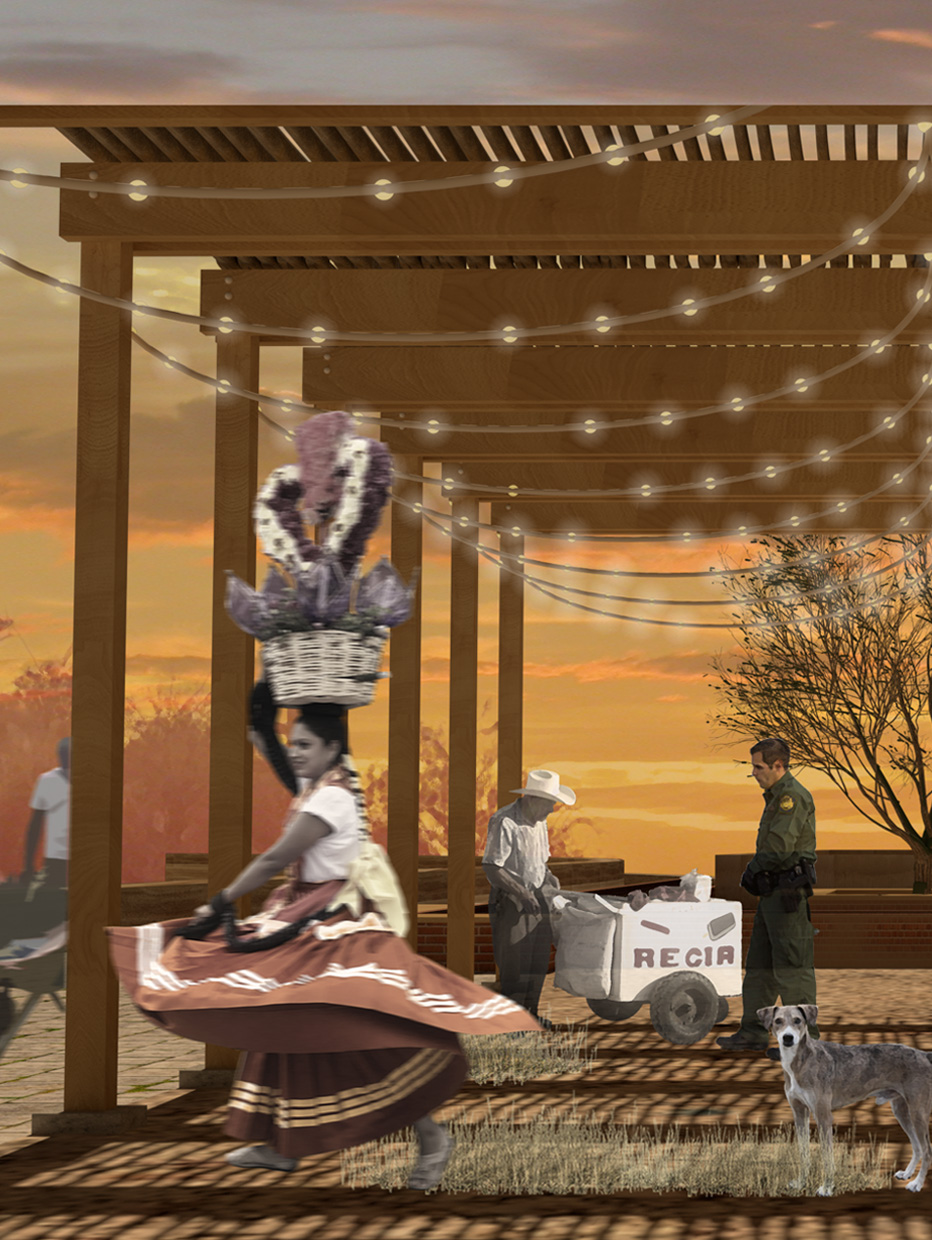Sin Fronteras

Category
Daylight in buildings - Region 3: The Americas
Students
Ana Astiazaran
Teacher
Altaf Engineer
Christopher Domin
School
University of Arizona
Country
United States
Download
Download ↓
PREAMBLE Architecture should improve the planet, create new worlds, and touch our souls. Using light as an ephemeral tool to enhance the site and provide what is needed while traveling the Sonoran Desert.Look at light as a phenomenon of nature and a cultural phenomenon.PROJECT STATEMENT The existence of human borders presents tremendous potential to support human rights and celebrate the space between cultures. Furthermore, this sets an opportunity to revitalize a “ghost town” and achieve thoughtful urbanization of border cities. “Sin Fronteras”, or “Without Borders”, aims to enhance, through meaningful architecture, the town’s richness, ranging from its geological to cultural features.
Set in Sasabe Sonora/Arizona, which is a dynamic site that encompasses modern global issues. Environmental problems, including agricultural failure, natural watercourses damage, excessive energy consumption, and animal migration have been some of the concurrent issues caused by the 1954 miles-long border wall construction. Locals in these border cities cross both from north to south and vice versa every day, usually referencing the United States or Mexico as “el otro lado” or “the other side”.
“Sin Fronteras” represents the concept of dissolving a boundary, located at the intersection between the United States and Mexico. “Sin Fronteras” or “Without Borders” reflects the idea of looking at the land as it could be: a landscape with no boundaries. A new world.
This specific location, known as the Altar Valley, is characterized as one of the most precious desert landscapes of the region. Due to its proximity to the Buenos Aires National Wildlife Refuge, the “Sin Fronteras” proposal is surrounded by a botanical garden to preserve distinguished flora and fauna. This addresses another modern global issue: environmental degradation (pollution, disruption of animal migration, etc.) caused by the construction of human borders. Furthermore, the garden adopts a pre-Hispanic agricultural method called agricultural terraces or “terrazas de cultivo” created by the Inca culture. This technique prevents soil erosion and runoff.
“Light of Tomorrow” is perceived as the light that unites us. The future of humanity depends on shifting our perspectives toward each other and nature.
Several strategies were applied in order to reach a thermal comfort zone in such a dry/hot climate. Heat avoidance strategies can reduce the energy consumption of buildings by as much as 80 percent. Two 20 ft by 100 ft elongated underground spaces referencing the border have their longer facades facing north and south, to achieve optimal daylighting in the interiors. In this region, the day length ranges from 10-to 15 hours per day of sun exposure. Therefore, these inhabitable spaces are mainly shaded with small apertures in the roof to introduce daylight and balance solar radiation. Moreover, the surrounding earth provides a nearly constant interior temperature due to its natural insulating properties. The construction material, rammed earth, also serves as thermal mass due to its high density. Solar behavior was tested in the interior spaces to create a balanced daylight environment and avoid glare. The Velux analysis informed that the underground spaces capture an illuminance level reduced by 85% on the sunniest day of the year, without an HVAC system.
The merger between two countries, which enhances unity and collaboration is the project’s driving force. The border that separates these countries, a dystopian hyper border, is among the most contrasting international borders in the world. “Sin Fronteras” would be the first transborder project in this hemisphere. The project will serve as a catalyst for re-thinking one’s perspective about the border and place within this liminal zone. We do not exist without light, it is everywhere and, ironically, light enters only through the wound. Then, what can be more significant than enhancing the light of a place?

































